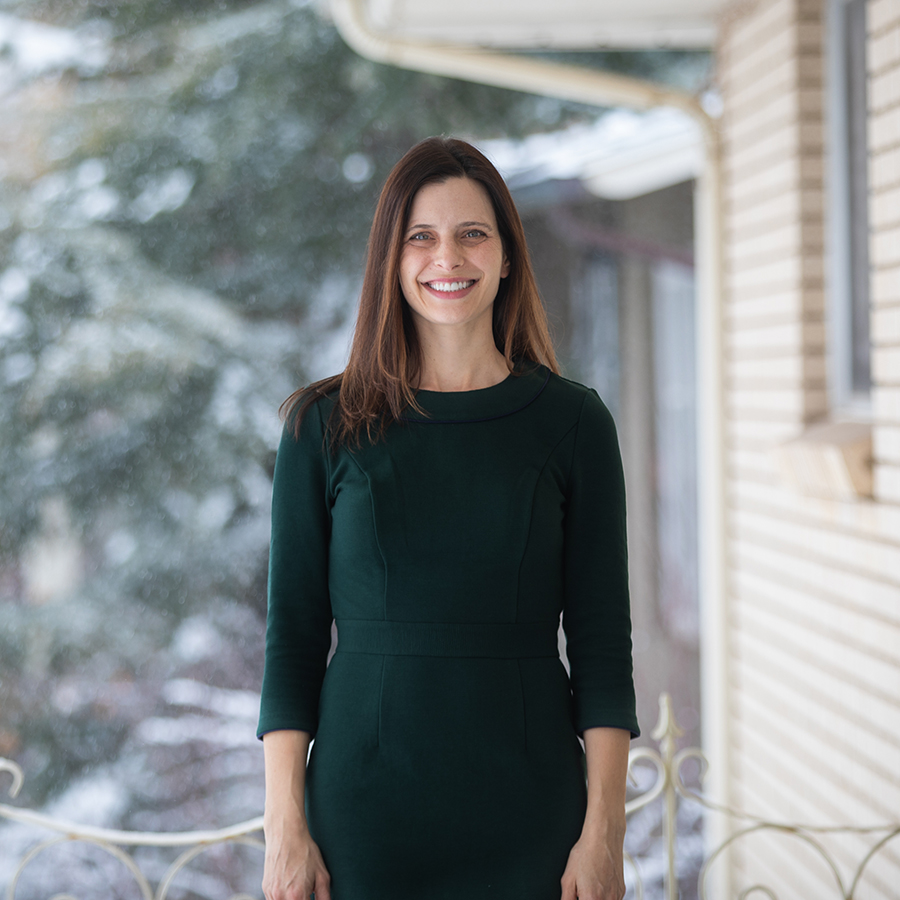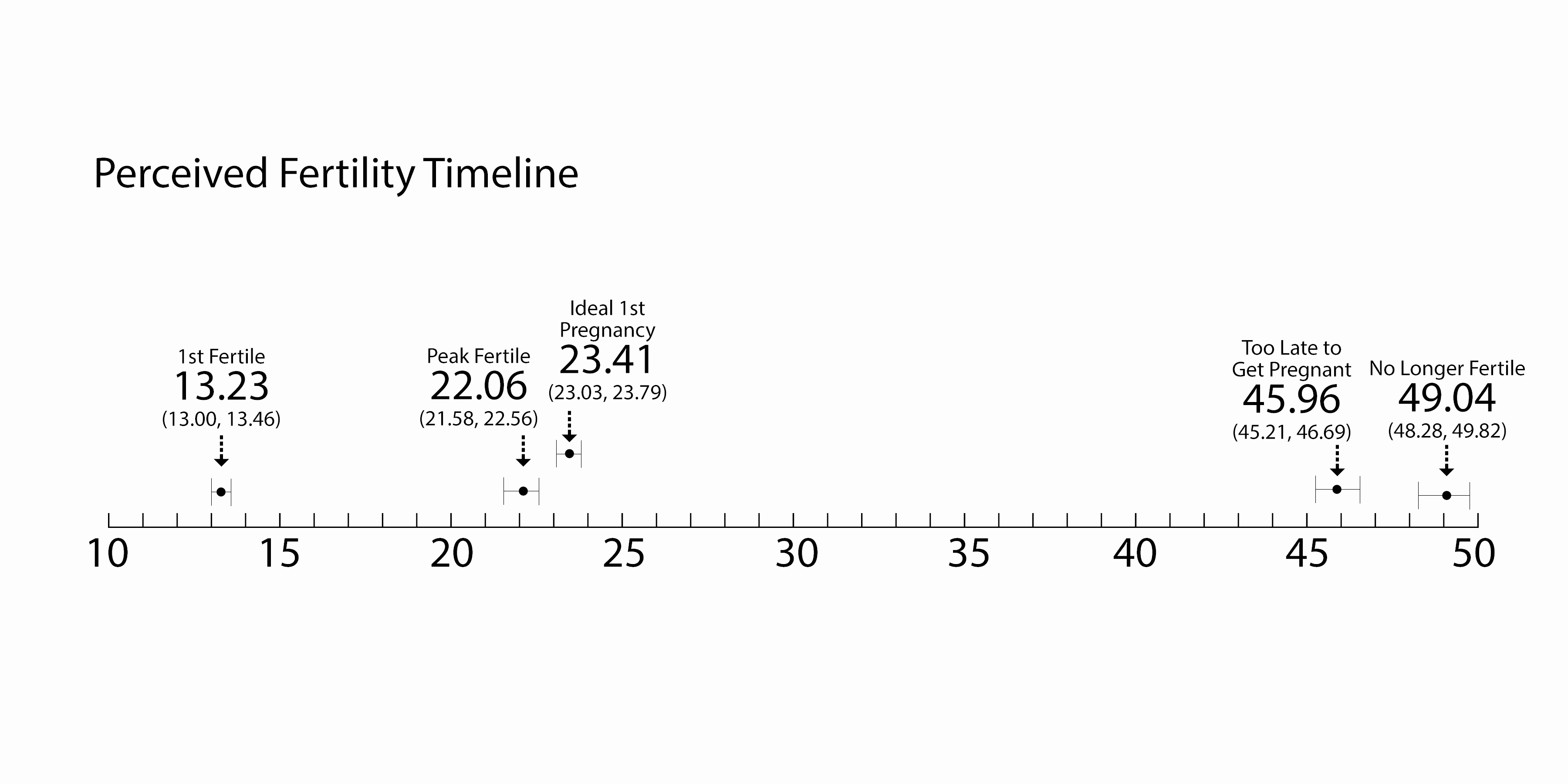What's the Ideal Time to get Pregnant?
Public Perception of the Female Fertility Timeline
The U.S. Census just released the latest population estimate and one story persists – fertility rates are down. At the moment, one child is born every eight seconds in the U.S. and one person dies every eleven seconds. Those two factors have yielded a natural population increase of one million last year, down from an increase of 1.8 million in 2008.
 Researchers are exploring a number of factors that might explain declines such as
modernity, delayed childbearing and economic shifts. But Robin E. Jensen, professor
of communication at the University of Utah, is taking a different approach.
Researchers are exploring a number of factors that might explain declines such as
modernity, delayed childbearing and economic shifts. But Robin E. Jensen, professor
of communication at the University of Utah, is taking a different approach.
“I think the first question is how the public conceptualizes fertility,” said Jensen. “For example, when do people think women are most fertile and what do they view as the ideal time to get pregnant? Once you understand those perceptions, then it might be possible to contextualize shifts in fertility rates over time.”
In other words, it is difficult to comprehend declining fertility rates without a deeper understanding of the underlying perceptions that drive fertility related behaviors. In a recent study published in Archives of Sexual Behavior, Jensen engaged these questions by surveying 990 U.S. adults and asking them about their perceptions of human fertility. Participants were asked the following.
- At what age does a female first become fertile?
- At what age does a female reach peak fertility? That is, when is she most fertile?
- At what age is a female no longer fertile?
- In general, what is the ideal (or best) age for a female to get pregnant for the first time?
- In general, when is it too late for a female to get pregnant?
The results of the survey provide a snapshot of the human fertility timeline, or how U.S. adults perceive fertility to manifest and shift across time. In Jensen’s study – co-authored with Nicole Martins, associate professor of telecommunications at Indiana University and Melissa M. Parks, doctoral candidate at the University of Utah – participants perceived initial fertility to occur around age 13, peaking around age 22 and fading to infertility at age 50. The ideal first pregnancy age was around 23, which places it just after peak fertility. Participants perceived women as too late for pregnancy at approximately 46 years of age.

“Survey participants communicated a relatively accurate portrayal of the female fertility timeline. At least, the parts of the timeline that can be scientifically quantified.”
There is general agreement within the scientific community concerning initial fertility (manifesting approximately at 12.7 years of age) and end of fertility (approximately 52 years). Peak fertility is harder to pin down.
“There seems to be sustained support for peak fertility falling between 19 and 27.”
In other words, public perception and scientific understanding are similar for initial, end and peak fertility. But what about the ideal time to get pregnant?
“This issue has as much to do with cultural norms and beliefs as it has to do with biological ability. Indeed, the decision of when (or if) to have children is deeply personal and influenced by numerous factors, some of which – it is important to note – are entirely outside of individual control.”
At the moment, public perception appears to reflect what is typical. U.S. Census data has shown that nearly 60 percent of mothers have their first child before the age of 25. Public perception also seems to follow underlying perceptions about fertility with perceived ideal first pregnancy (23) following in the wake of perceived peak fertility (22). It seems logical that peak fertility and ideal first pregnancy would be related, but Jensen points out that the relationship is also somewhat counterintuitive:
“Why does the public situate peak fertility before ideal first pregnancy when getting a running start at peak fertility would seem to provide the best shot at meeting those ideal first pregnancy targets?” This is a question that Jensen, Martins and Parks hope to explore in the future.
Fertility perceptions varied among groups. Peak fertility was deemed to be higher by those with higher income levels, as well as by participants who identified as White. The flipside of this is that lower income levels and participants who identified as Black and Hispanic perceived peak fertility at a younger age. In these perceptions, the authors contend that the seeds of longitudinal health disparities seem to be evident.
“That individuals representing populations at higher risk for health disparities are also those most likely to perceive ideal pregnancy age earlier demonstrates that perceptions – while not the same thing as behaviors – are often tied to health outcomes in ways that reinforce the status quo.”
The study had a number of limitations. Participants only reported their perceptions at a single point in time. The study included participants ranging in age from 18 to 89, but how fertility perceptions evolve for an individual across the lifespan is still unknown. Perceived fertility was measured using five open-ended questions. That approach yielded answers that mirrored scientific understanding, yet the veracity of measuring perceptions in this manner is still a matter needing further research. Finally, the survey only included U.S. adults who were recruited via a survey company. Accordingly, the data do not reflect human perception of fertility in other parts of the world.
